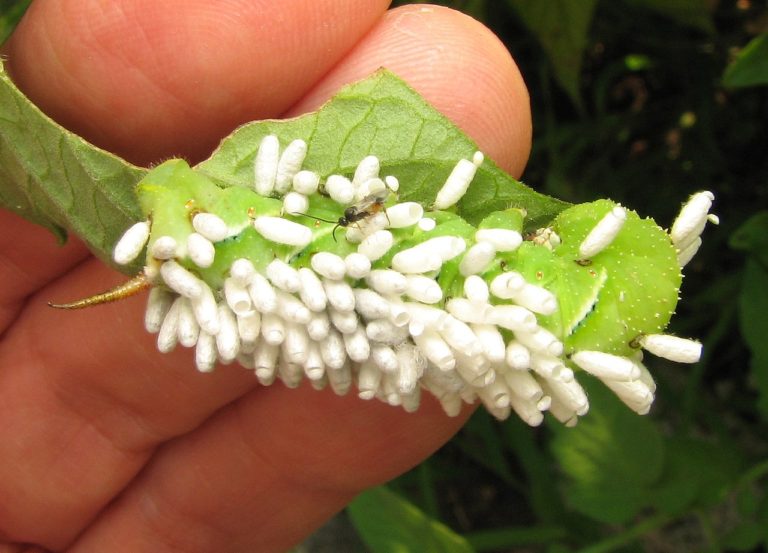Tomato Hornworm
Insect Identification
Images
Damage
The caterpillar is capable of consuming a significant amount of both fruit and vegetation. Even though its camouflage is effective which makes it hard to see, the damage to the plant and fruit should be obvious.
Affected Plants
Management
Unlike most types of caterpillars, the tomato hornworm is extremely large and easy to locate and remove by hand. Unless there is a severe infestation on your plants, physical removal should suffice. Control techniques are listed in order of effectiveness.
Physical removal
- The best way to control the caterpillar is to physically remove it from the plant and destroy it using whatever means you are most comfortable with.
Predators
- A specific parasitic wasp (scientific name Trichogramma) attacks the eggs laid by the moth that produces the tomato hornworm.
- A second parasitic wasp (scientific name Cotesia congregate) lays eggs in the back of the tomato hornworm (see image above) which then produce more wasps to attack even more caterpillars. If you see a tomato hornworm with small white cocoons attached to its back, leave the caterpillar on the plant so the wasps have the chance to emerge from their cocoons.
Insecticides
- Only apply insecticides to control tomato hornworms only if you are unable to manually remove the caterpillars from the plant. They should be considered a method of last resort.


